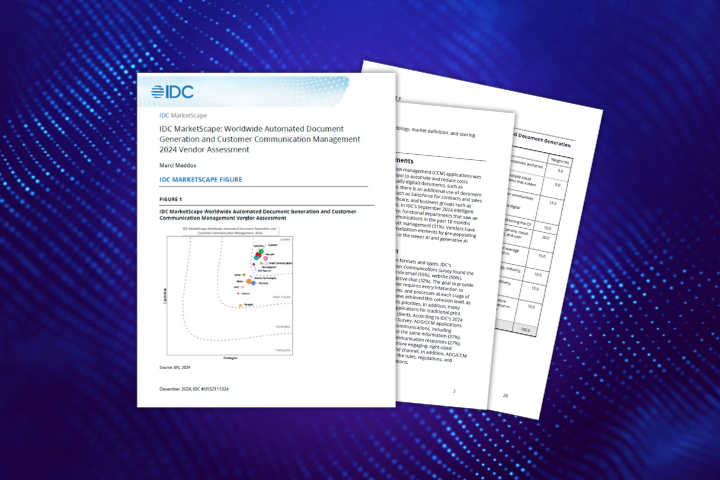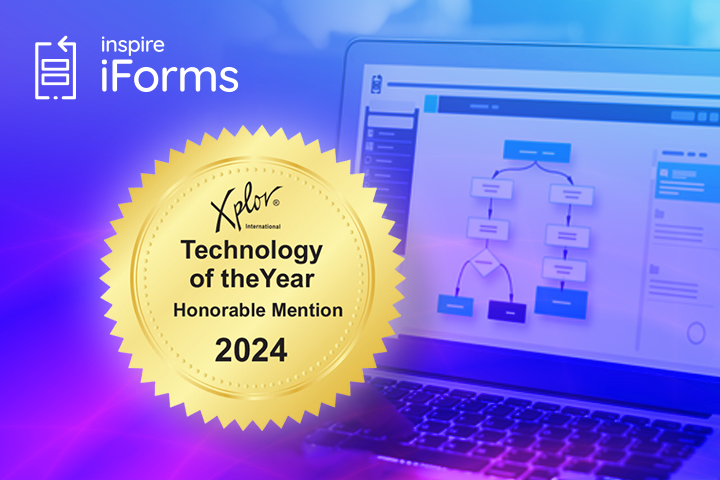Introduction
“I love filling out and dealing with paperwork.” Said no one, ever. That’s certainly not a secret. But what might be surprising is that long ago, before organizations were digitizing their paperwork, people actually liked it.
Just a few decades ago, if you were applying for a loan or opening a new account, there was likely someone there to:
- Ask you useful questions
- Find out exactly what forms you need
- Fill out the forms for you
It wasn’t your job to fill out the paperwork (well, unless you were the “someone” who was there helping – then yes, it was your job). You were the customer, and the business was going to do everything it could to make you happy and start the relationship off on the best foot possible.
The paperwork itself was a catalyst for this new relationship. It helped the business understand your needs, and in turn, the process helped you build trust and a long-lasting relationship with your chosen organization.
Somewhere along the way, though, this personal touch and the corresponding relationship side of paperwork was lost, leaving customers with the burden of finding and completing these complex processes on their own. Navigating complex documents that, even when they're simplified, can still be utterly bamboozling.

This is where the current hate for paperwork, from the customer’s perspective, developed.
However, if we’re being honest, the paperwork itself isn’t the problem
Paper-based documentation is usually built to serve an organization’s business processes and legal needs, and it typically does this very well. Chances are, it was crafted and refined over years or decades in an attempt to help the business run as efficiently as possible.
So, if the paperwork isn’t the problem, what is?
The problem is that over time, organizations turned these internal forms – documents that once came with their own administrator – into customer-facing ones, completely eroding the goodwill that used to come with them.
Even now, as organizations begin to understand the absolute disdain most customers have for paperwork, many can’t see a profitable path forward toward paperwork digitization, so they continue to push customers to "document centers" where they are forced to find and complete paperwork on their own.
The general belief is that in order to reduce the burden of paperwork and improve the customer’s experience, a business will be forced to change its internal processes and retrain existing staff. That's a daunting task for a small business and a multi-year, multi-million dollar project for a large enterprise.
Change doesn’t have to be disruptive
Paperwork, or the process of gathering customer information, can be a positive for any business. There are practical steps you can take immediately to start improving how you engage with your customers and how you continue to produce and consume your existing paperwork.

Step 1: Digitize and automate the paperwork
We live in a digital world, so look for digital solutions that help you automate your paperwork. The right solution will allow you to create dynamic digital experiences that interview customers like the old days with simple, intuitive questions, automatically generate pre-filled copies of your existing paperwork, or send the data downstream to your existing systems.
For example, some solutions will offer an autocomplete feature that makes it far easier for customers to enter their information, like addresses prone to typos and mistakes.
Step 2: Eliminate unnecessary questions
Just like a great spring cleaning, sometimes you just have to throw a few things out. The concept applies to the fields in your forms. Over the years, you’ve likely collected a massive number of required and optional fields in your documents, which is actually a pretty good approach to complex problem-solving.
But are they STILL all needed for the process? What would happen if you asked a few less questions to your customers? Is it possible to change the questions depending on your customer's needs?
Regardless of whether your process is manual or has already been digitized, It’s important to periodically check to see if the questions in your documents are still relevant to the majority of your customers. If they aren’t, consider making a change.
Step 3: Talk (or write) like a person
Reading the language in a typical form can be painful. Consider going through your documents and changing the language of your questions to be more in line with a simple, natural conversation.
Instead of: "What is your primary residence?", maybe ask “Where do you live?”
Little changes like that go a long way, especially when you’re talking about forms filled with industry jargon and legalese.
Paperwork can be optimized (and automated)
If your business is still using paperwork to acquire new customers (we totally get it; some industries have legal requirements to do so), then it’s critical that you devote time to really study your documents and the ways they can be improved.
You probably already have teams devoted to optimizing and automating conversions on your website, your landing pages, and every other avenue for customer acquisition, so it’s time to pay the same attention to your paper forms.







